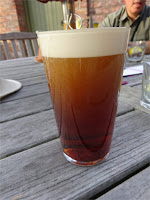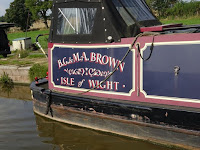-->
 |
| Train Parts |
I love anything mechanical. Give me gears,
cogs, levers and any sort of engine and I love it. I love cars, motorcycles,
boats and trains. If it moves with an engine I like it. So when we discovered a
museum of transportation here is Glasgow, it was on my “must-see” list.
Glasgow has always had an image problem,
seen as a working town with its neighbor Edinburgh being the
“interesting” city. As a result Glasgow
is trying to improve it’s image for visitors. One way it has done this is to
make most of the city attractions free. Most of their museums do not charge to
visit them.
 |
| A wall of cars |
The Riverside Museum of Transportation is
one of the best and most interesting museums I have ever visited. It is in a
beautiful setting right on the River Clyde in a beautiful modern new building.
Although a ways from our hotel, it was on our "Hop-on-hop-off” tour bus route,
so getting there was easy.
The most interesting thing about this
museum was how they presented things. For example I have visited many excellent
car museums with impressive collections of vehicles, but here the cars were
displayed on a wall or parked on an incline two stories long. In addition there
was a special display of a Mini, an Anglia, and an Imp There was a whole room
devoted to engines including a Beetle that children could climb under to see
the engine. There was a display of a new Mini used in safety testing and a Ford
Cortina that was sold as original, but was really two cars welded together.
 | |
| South African Steam Locomotive |
There was a wall of motorcycles, four
massive steam locomotives including one that had been built in Glasgow, shipped
to South Africa, returned to Scotland 100 years later and restored, A tiny
trailer where hippy protesters of Nuclear war lived, a presentation on the
first ship sunk during WWII, a room about subways, a revolving carousal of
model ships, a number of displays about bicycles and many other different
topics and displays. Outside docked on the river was a three masted tall ship
also open for exploring.
Although I walked through the entire museum
and saw everything (I think . .), I did not have time to spend the amount of
time I would
have liked with all the displays. I spent a lot of time with the old steam
engine from South Africa, and I spent a lot of time on the wall of motorcycles,
but the police pursuit vehicle could have used more time, as could the Hillman
Imp.
 | |
| Part of a steam engine |
You can see why this museum appealed to me,
but Regis also said it was the most interesting one she has visited as well.











































